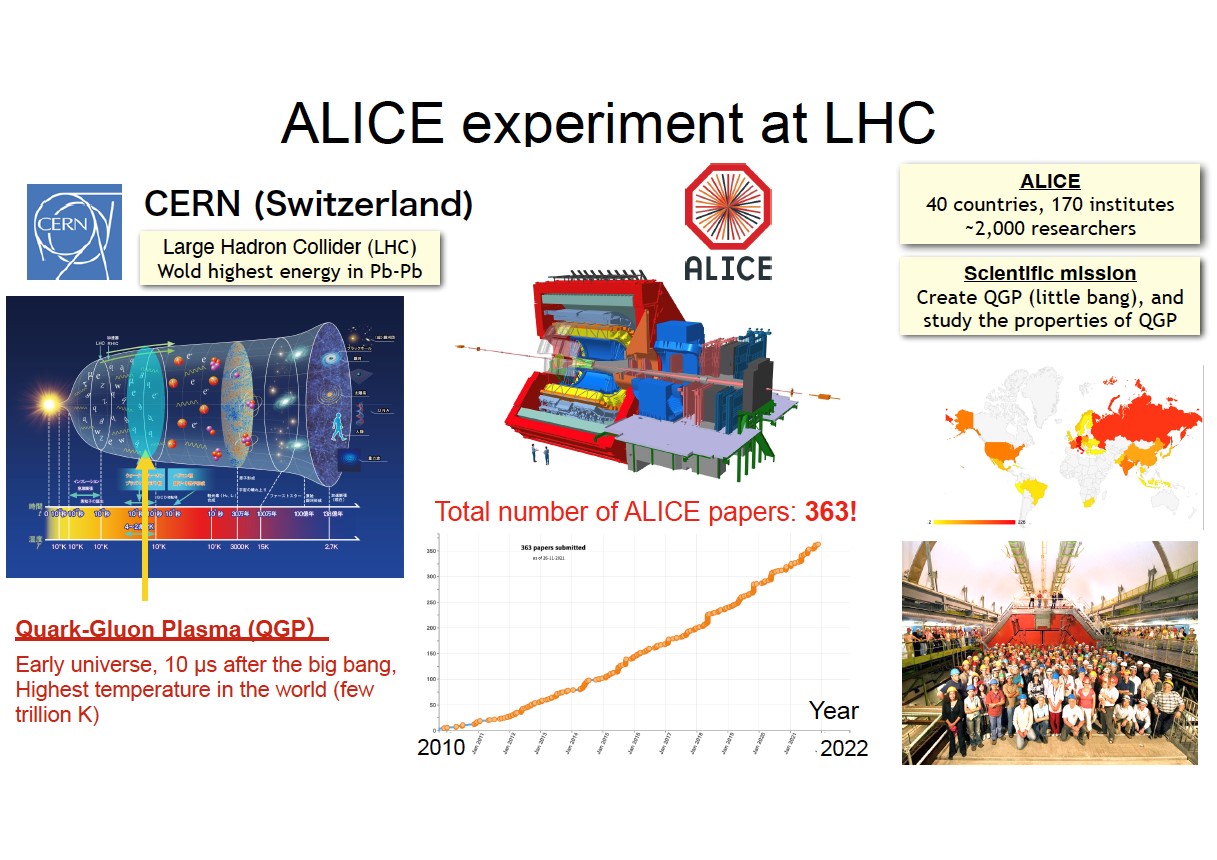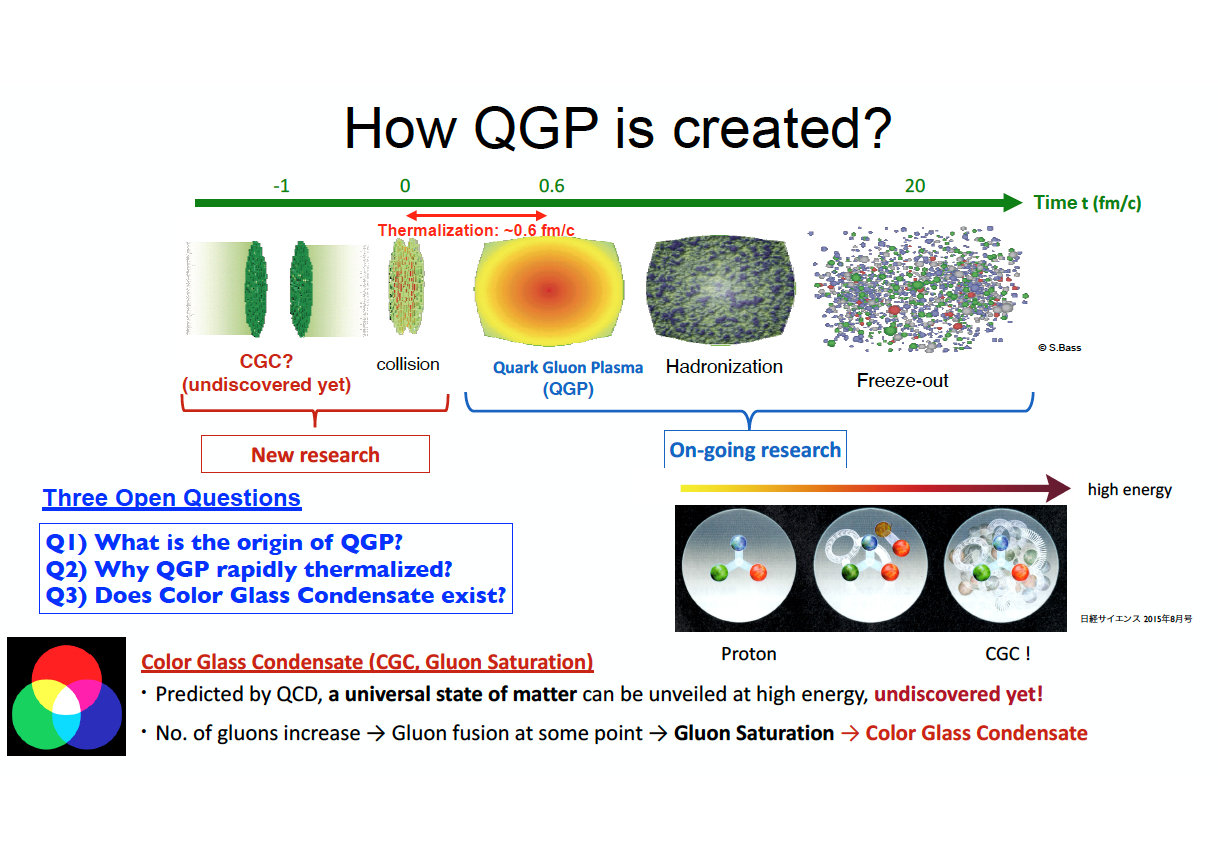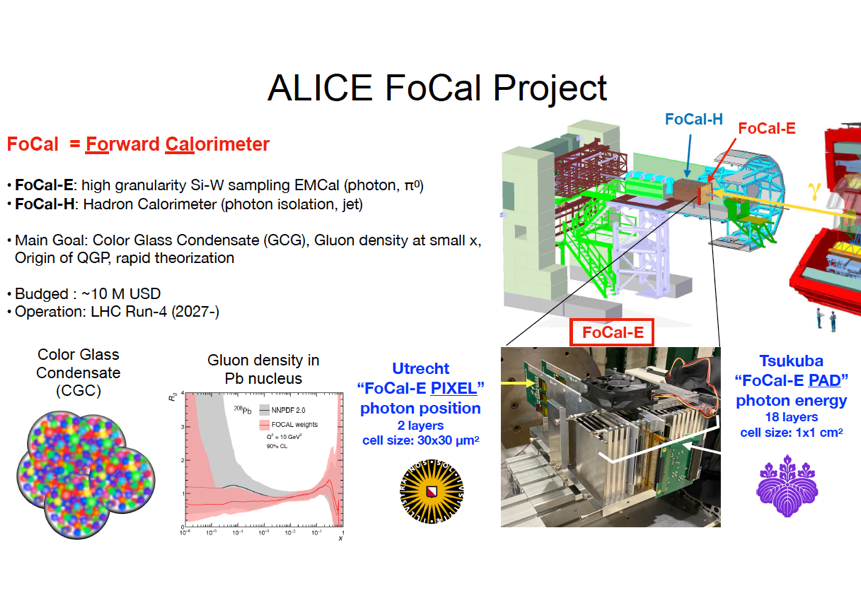ALICE experiment
The ALICE Collaboration has built a detector optimized to study the collisions of nuclei at the ultra-relativistic energies provided by the LHC. The aim is to study the physics of strongly interacting matter at the highest energy densities reached so far in the laboratory. In such conditions, an extreme phase of matter – called the quark-gluon plasma – is formed. Our universe is thought to have been in such a primordial state for the first few millionths of a second after the Big Bang, before quarks and gluons were bound together to form protons and neutrons. Recreating this primordial state of matter in the laboratory and understanding how it evolves will allow us to shed light on questions about how matter is organized and the mechanisms that confine quarks and gluons. For this purpose, we are carrying out a comprehensive study of the hadrons, electrons, muons, and photons produced in the collisions of heavy nuclei (208Pb). ALICE is also studying proton-proton and proton-nucleus collisions both as a comparison with nucleus-nucleus collisions and in their own right. In 2021 ALICE is completing a significant upgrade of its detectors to further enhance its capabilities and continue its scientific journey at the LHC for many years to come.
https://alice-collaboration.web.cern.ch/

FoCal project
A new forward high-resolution calorimeter, called FoCal (Forward Calorimeter) is being planned as one of the two upgrade projects for the ALICE experiment that are aiming for installation during the LS3 (2026-2028) for physics data taking in LHC Run-4 (2029-2032). The letter of Intent of FoCal has been submitted to the LHCC and the FoCal project has been endorsed in June 2020 towards the final R&D process for the Technical Design Report (TDR).
The FoCal is a highly granular silicon-tungsten electromagnetic calorimeter combined with a conventional sampling hadronic calorimeter covering pseudo-rapidities of 3.2 < η < 5.8 (Figure 1). It provides unique capabilities at LHC to probe small-x gluon distributions via prompt photon production. FoCal significantly enhances the scope of existing ALICE physics programs by providing measurements of inclusive production cross sections and correlations of neutral mesons, prompt photons, and jets at high rapidities, to explore the unknown dynamics of the quarks and gluons inside a nucleus at small momentum fraction x down to 10-6 for the first time. It is also expected to elucidate the existence of the Color Glass Condensate (CGC), which describes the dynamics of very densely populated gluon states at very small momentum fraction x in the nucleus, and is expected to be important for the early stages of the formation of the Quark-Gluon Plasma in heavy-ion collisions.
https://ep-news.web.cern.ch/content/towards-focal-alice-experiment


